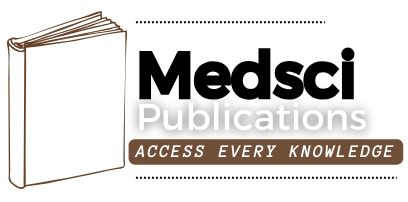High Vs Low Dose Caffeine in Management of Apnea of Prematurity: A Single-Center Observational Study
DOI:
https://doi.org/10.55489/njmr.150420251151Keywords:
Prematurity Apnoea, Caffeine Dose, NICU Stay, Oxygenation, ExtubationAbstract
Background: Apnoea of prematurity is one of the leading causes of apnoea in preterm infants leading to hypoxia and deleterious neurodevelopmental outcomes. Caffeine has been used for management for apnea but the optimum dose has not been well investigated and a wide variety of the dose are under trials. The study aimed to compare the efficacy and safety of high and low dose caffeine.
Methodology: All the preterm infants with gestational age <34weeks and fulfilling our inclusion criteria were included in study. Babies born between the dates August 2023 to January 2024 were studied prospectively (Group A) and those between July 2022 to December 2022 were studied retrospectively (Group B). The infants included in Group A were given high dose caffeine (loading 40mg/kg/day and maintenance 20mg/kg/day) vs low dose caffeine was given to the Group B infants (loading dose 20mg/kg/day and maintenance 10mg/kg/day) and they were followed up based on their oxygen requirements, frequency of apnoea episodes, duration of NICU stay, duration of ventilation and successful extubation.
Results: High dose caffeine was found to be effective in reducing duration of oxygenation (p value 0.003) and duration of NICU stay (p value 0.03). There was no statistical significance found in frequency of apnea episodes, side effects and successful extubation between both the groups.
Conclusion: High dose is preferred as the duration of oxygenation and the hospital stay is shortened with no increase in side effects.
References
1. American Academy of Pediatrics. Task Force on Prolonged Infantile Apnea. Prolonged infantile apnea: 1985. Pediatrics. 1985 Jul;76(1):129-31. DOI: https://doi.org/10.1542/peds.76.1.129 PMID: 4011346. DOI: https://doi.org/10.1542/peds.76.1.129
2. Robertson CM , Watt MJ, Dinu IA. Outcomes of extremely premature infants : What is new? And where are we going ? Pediatr Neurol 2009 Mar; 40(3):189-196. DOI: https://doi.org/10.1016/j.pediatrneurol.2008.09.017 PMid:19218032 DOI: https://doi.org/10.1016/j.pediatrneurol.2008.09.017
3. Martin RJ , Abu-Shawseesh JM , Baird TM . Apnoea of prematurity , Paediatr Respir Rev 2004;5 Suppl A: S377-382. DOI: https://doi.org/10.1016/S1526-0542(04)90067-X PMid:14980300 DOI: https://doi.org/10.1016/S1526-0542(04)90067-X
4. Steer PA, Flenady VJ, Shearman A, Charles BG, Gray PH, Henderson-Smart D, Bury G, Fraser S, Hegarty J, Rogers Y, Reid S, Horton L, Charlton M, Jacklin R, Walsh A et al. High dose caffeine citrate for extubation of preterm infants: a randomized controlled trial. Arch Dis Child Fetal Neonatal Ed.2004;89(6):F499-F503. DOI: https://doi.org/10.1136/adc.2002.023432 PMid:15499141 PMCid:PMC1721801
5. Mohammed S, Nour I, Shabaan AE, Shouman B, Abdel-Hady H, Nasef N. High versus low-dose caffeine for apnea of prematurity: a randomized controlled trial. Eur J Pediatr. 2015 Jul;174(7):949-956. DOI: https://doi.org/10.1007/s00431-015-2494-8 PMid:25644724 DOI: https://doi.org/10.1007/s00431-015-2494-8
6. Bruschettini M, Brattström P, Russo C, Onland W, Davis PG, Soll R. Caffeine dosing regimens in preterm infants with or at risk for apnea of prematurity. Cochrane Database Syst Rev. 2023 Apr 11;4(4):CD013873. DOI: https://doi.org/10.1002/14651858.CD013873.pub2 PMid:37040532 PMCid:PMC10089673 DOI: https://doi.org/10.1002/14651858.CD013873.pub2
7. Philip RK, Viraraghavan VR, Chandel P. Indian Academy of Pediatrics Standard Treatment Guidelines 2022. Preterm with Respiratory Distress. Indian academy of Pediatrics;2022. p. 7.
8. Agrawal R, Deorari AK, Paul VK, Shankar MJ, Sachdeva A. Management therapy for Apnea of prematurity , AIIMS Protocols in Neonatology 3Rd edition. Volume 1 (Core protocols). New Delhi: CBS Publishers & Distributors;2024. Chapter 16, pg 190.
9. Agrawal R, Deorari A, Paul V, Shankar MJ, Sachdeva A. Invasive Mechanical Ventilation. In: AIIMS Protocols in Neonatology. 2nd ed. Vol. 2. New Delhi: Noble Vision Publishers; 2019.p. 587.
10. Singh M. Intraventricular haemorrhage. In: Care of Newborn.9th ed.New Delhi: CBS Publishers & Distributors;2022. P. 432.
11. Agrawal R, Deorari A, Paul V, Shankar MJ, Sachdeva A. Commonly used drugs A-1.In: AIIMS Protocols in Neonatology. Vol 2.2nd ed. New Delhi: Noble Vision Publishers; 2019.p. 692-693.
12. Steer P, Flenady V, Shearman A, Charles B, Gray PH, Henderson-Smart D, Bury G, Fraser S, Hegarty J, Rogers Y, Reid S, Horton L, Charlton M, Jacklin R, Walsh A; Caffeine Collaborative Study Group Steering Group. High dose caffeine citrate for extubation of preterm infants: a randomised controlled trial. Arch Dis Child Fetal Neonatal Ed. 2004 Nov;89(6):F499-503. DOI: https://doi.org/10.1136/adc.2002.023432 PMid:15499141 PMCid:PMC1721801 DOI: https://doi.org/10.1136/adc.2002.023432
13. Scanlon JE, Chin KC, Morgan ME, Durbin GM, Hale KA, Brown SS. Caffeine or theophylline for neonatal apnoea? Arch Dis Child. 1992 Apr;67(4 Spec No):425-428. DOI: https://doi.org/10.1136/adc.67.4_Spec_No.425 PMid:1586184 PMCid:PMC1590510 DOI: https://doi.org/10.1136/adc.67.4_Spec_No.425
14. Kumral A, Tuzun F, Yesilirmak DC, Duman N, Ozkan H. Genetic basis of apnoea of prematurity and caffeine treatment response: role of adenosine receptor polymorphisms: genetic basis of apnoea of prematurity. Acta Paediatr. 2012 Jul;101(7):e299-303. DOI: https://doi.org/10.1111/j.1651-2227.2012.02664.x PMid:22462821 DOI: https://doi.org/10.1111/j.1651-2227.2012.02664.x
15. Kassim Z, Greenough A, Rafferty GF. Effect of caffeine on respiratory muscle strength and lung function in prematurely born, ventilated infants. Eur J Pediatr. 2009 Dec;168(12):1491-1495. DOI: https://doi.org/10.1007/s00431-009-0961-9 PMid:19271237 DOI: https://doi.org/10.1007/s00431-009-0961-9
16. Brattström P, Russo C, Ley D, Bruschettini M. High-versus low-dose caffeine in preterm infants: a systematic review and meta-analysis. Acta Paediatr. 2019 Mar;108(3):401-410. DOI: https://doi.org/10.1111/apa.14687 PMid:30537356 DOI: https://doi.org/10.1111/apa.14586
Downloads
Published
How to Cite
Issue
Section
License
Copyright (c) 2025 Bhavya N Shroff, Poonam Singh, Amita U Surana, Ankur Chaudhari

This work is licensed under a Creative Commons Attribution-ShareAlike 4.0 International License.
Author/s retain the copyright of their article, with first publication rights granted to Medsci Publications.









